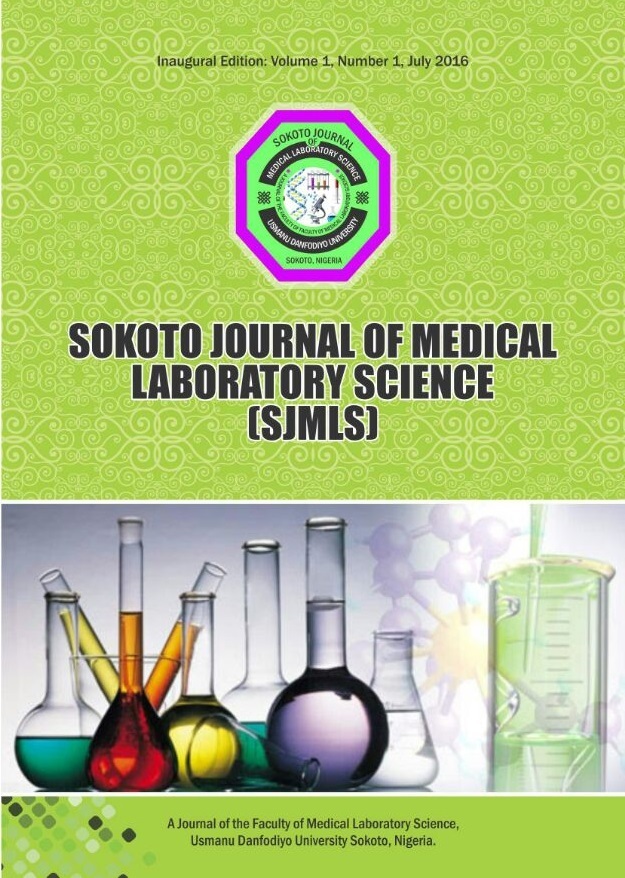Prevalence of Uropathogens in Zaria, Kaduna State, Nigeria
Keywords:
UTI, uropathogens, Zaria, Kaduna State, NigeriaAbstract
Urinary tract infections that erupt as a result of microbial presence and growth in the urinary tract accounts for significant annual hospital visit in Nigeria, creating gross economic burden on the populace. This study evaluated the prevalence of uropathogens in 4
hospitals using simple random sampling method for the period of 6 months (April – September, 2015) in Zaria, Nigeria. The result showed that 26.5% (795) of the total samples submitted (3003) for urinalysis had uropathogens ranging from E. coli (57.6%), Klebsiella
spp. (19%), Staph. spp. (9.2%), Candida spp. (5.3%), Proteus mirabilis (3.5%), Streptococci spp. (2.2%), Pseudomonas spp. (1.9%) to Citrobacter spp. (1.3%). High percentage of uropathogens were observed in female patients (71.2%) compared to their male counterpart (28.8%) and age group 18-44years had the highest incidence (73.7%) followed by the elderly ≥45years (17.6%), while the toddlers (age group 0-5 years) and the teens (6-17 years) had the least incidence (5.3% and 3.7% respectively). This study showed that E. coli is the most common bacteria associated with UTI and the possibility of other clinical pathogenic organisms manifesting in UTI patients are possible. Therefore, rapid microbial identification techniques, antibiotic surveillance and management of UTI are recommended in the management of UTIs in order to curb the widespread of resistance traits among uropathogens in Zaria, Nigeria.




